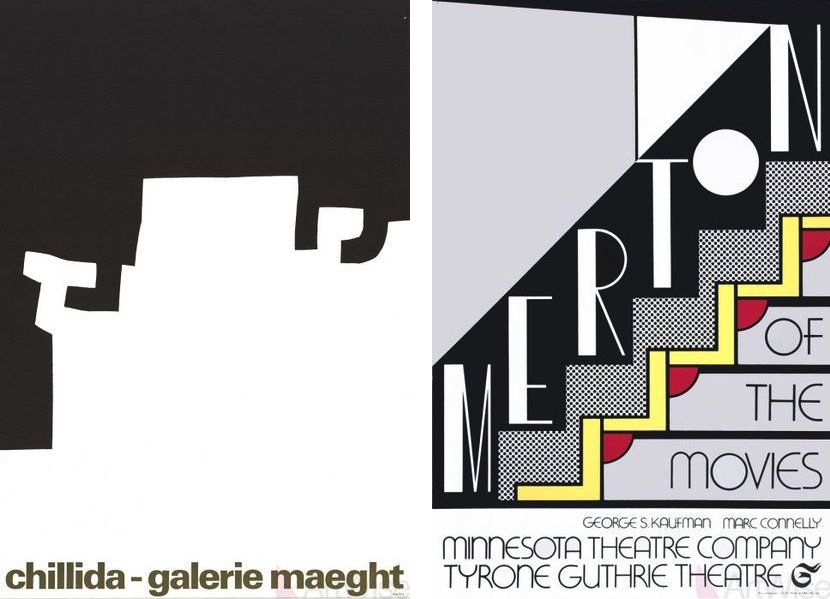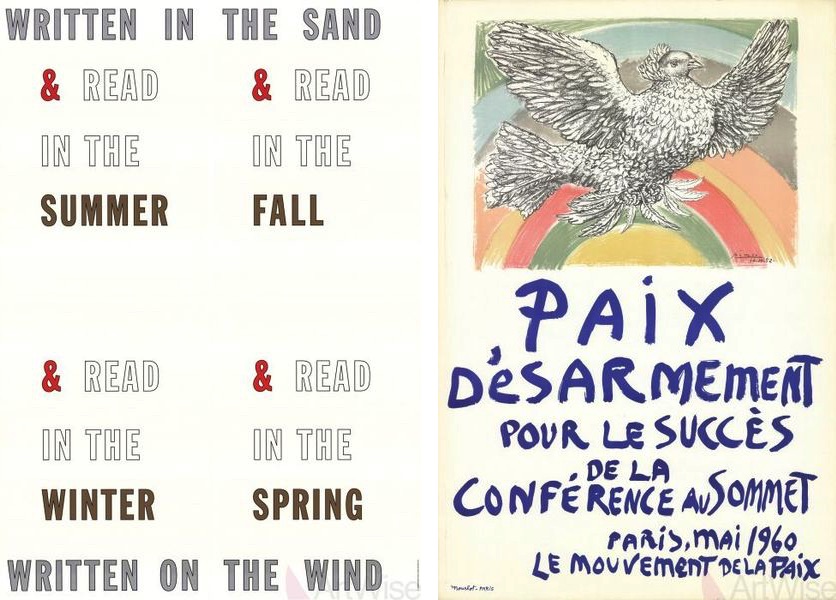[ad_1]
For those still appreciating the old, analog way of creating fine art prints and posters at a time of the digital reign and mass-production, ArtWise is the place to go.
Established in 1992, this exceptional company has grown from a small selection of museum and exhibition posters to an expansive inventory of highly sought after artworks with an emphasis on signed and limited edition posters and prints. Their collection now holds some of the most exquisite Modern and Contemporary Art prints, including those by artists such as Pablo Picasso, Roy Lichtenstein, Robert Indiana, Alex Katz, Robert Rauschenberg, David Hockney, Frank Stella, Andy Warhol and Tom Wesselmann. Operating from a warehouse in Dumbo, New York, the platform has built a strong international presence while maintaining a focus on personalized service and contact.
To learn more, we had a chat with ArtWise’s founder and president Bernard Rougerie. In an exclusive Widewalls interview, he talks about the platform’s history, exhibition posters and prints collection, their place in art history, their location in Brooklyn, and much more.

The History of ArtWise
Widewalls: Founded almost thirty years ago, ArtWise has developed from a small selection of museum and exhibition posters to an expansive inventory of highly sought-after artworks. What is the secret of its longevity and excellence?
Bernard Rougerie: All along we curated every piece. We built the collection with major artists. As a small company, we could be more patient with smaller vendors that had great images but poor delivery logistics.
In the same way, we were able to adapt to museums’ packing limitations and actually pack our own art on premises.
Finally, our passion for posters was shared with dealers around the world and we shared our finds with one another.
Widewalls: Could you tell us something about the history and evolution of the platform?
BR: When we started in 1993, the industry was conducted through catalogues. The largest companies published the most comprehensive poster catalogues. These catalogues could be found in every frame shop, poster shop around the world. Clients would browse the catalogues until they found the desired piece. Once the item was selected, the business owner would call the publisher and order the artwork wanted.
Once the poster arrived, the client would return to select framing. At one point, we had over 9000 active shops buying from us. The larger catalogues were the operating software, the “Windows” of every shop back then. It was the war of the catalogues and discounts.
As internet connections improved and computer speed increased, clients found it less and less appealing to visit and shop and settle for whatever the catalogues offered. The internet opened the poster world to thousands and thousands more images than any catalogue could ever hold. It was a quick extinction and our exit from under the shadows of the big publishers.
During those years of the big catalogues, as the poster business became more and more competitive, publishers moved away from high quality to the lower-end more profitable images, unfortunately mostly images from unknown artists and fast trends.
We started our online platform very early, back in 1995 when most households were still on dial-up.
Fast forward and thanks to Google search, clients were now able to find images they wanted by the artists they loved most. We only carried the most known artists. As it goes, people could only search for what they knew, and we had most of the well-known names. Our platform exploded and remains tops today.
As e-retailers grew, we were very active in documenting every single piece of artwork we bought and keeping our collection current.

The Extensive Poster Collection
Widewalls: Your collection of exhibition posters features a range of rare and valuable works. What are some of the highlights of the collection?
BR: Posters published in the Pop Art years remain the most attractive and valuable pieces. The artworks made then were reproduced taking into account the artist’s intentions. Basically, a published silk-screen print was re-created as a silk-screen poster, a lithograph as a lithograph. Lichtenstein, Haring, Warhol and Rauschenberg created some incredible images that have appreciated exponentially today.
Widewalls: How would you describe the place these posters hold in art history, but also the art market?
BR: Posters are time stamped. They are in a way historical documents, that express mood, aesthetics, style from specific periods in time. They are advertisements, created by the artist to help promote their shows. No other sector of the art world has this kind of documentation. It’s like owning a relic from the time, a piece of the history.
Widewalls: Although you are best known for your collection of posters, you also have an extensive collection of limited edition prints. Could you tell us more about this?
BR: Initially, when I started the company while working in a poster store on Bleecker Street in the Village, I noticed that people would always ask for the original of anything. In most cases, the original could happen to be very expensive. The second option would be the limited edition of the image, basically a numbered amount of prints made from the original at a lesser cost. Finally, the image could have been used to promote an event, a show, an exhibition, now becoming a poster.
That gave me the idea that whenever possible, we would offer all three options, the original, the print and the poster. This is why we have so many prints in stock. The goal is to satisfy the client looking for something more valuable and of higher quality than the poster and still affordable.

The Dumbo Location
Widewalls: How do you see the future of analog printing in a world of digital on-demand printing?
BR: With amazing quality printers coming to the market, analog printing is most likely going to be obsolete. The cost, the labor, the space required to run analog printing all add up to its demise.
I don’t see too many offset printing companies around in a few years.
The on-demand printing is excellent, inexpensive and as it says, ‘on demand’ requires that you can print only one copy if only one copy is needed, unlike offset presses that required editions to number 300+ to break even. What this means, however, is that the value of analog prints goes up as they become more and more scarce. They become collector’s items.
Widewalls: How did you decide to settle in Dumbo, Brooklyn NY? What makes this place unique?
BR: From our beginning, we moved with the real estate valuations, from Soho to Chelsea to Park Slope to Dumbo where we have been since 2002. It wasn’t by choice but by market forces.
Rents rising from $300/month to $6000/month within months, no leases, it’s one of our biggest challenges staying in the Big Apple.
Dumbo is really unique, so close to Manhattan. It has become the Times Square of Brooklyn. There are so many people here every day of the year, it has transformed into a major tourist hub.
Widewalls: How do you see the platform evolving in the future?
BR: Our biggest concern is maintaining visibility. The larger platforms have made the internet a place you need to pay if you want to play.
The cost of visibility is increasing year after year. Clicks and ads and all the products helping improve the visibility are more and more expensive.
We are keeping with our first idea, the best ingredients make the best recipes, maintaining a high curatorial level, listening to our base, positioning the best images into the best platforms.
Hallelujah!
Featured image: Bernard Rougerie, courtesy ArtWise.
[ad_2]
Source link

